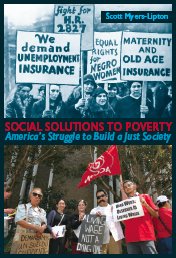Katrina Pain Index - 2009
By BILL QUIGLEY & DAVIDA FINGER
0. Number of renters in Louisiana who have received financial assistance from the $10 billion federal post-Katrina rebuilding program Road Home Community Development Block Grant – compared to 116,708 homeowners.
0. Number of hospitals in New Orleans providing in-patient mental health care as of September 2009 despite post-Katrina increases in suicides and mental health problems.
1. Rank of New Orleans among U.S. cities in murders per capita for 2008.
1. Rank of New Orleans among U.S. cities in percentage of vacant residences.
2. Number of Katrina cottages completed in Louisiana as of beginning of 2009 hurricane season under $74 million dollar federal program.
33. Percent of 134,000 FEMA trailers in which Katrina and Rita storm survivors were housed after the storms which are estimated by federal government to have had formaldehyde problems.
35. Percent of child care facilities re-opened in New Orleans since Hurricane Katrina.
35. Percent increase of demand in 2009 at emergency food programs in New Orleans and surrounding parishes, “an increase pinned on the swelling ranks of under-employed and rising food, housing, and fuel costs.”
50. Ranking of Louisiana among states for overall healthcare.
52. Percent increase in rents in New Orleans since Katrina.
52. Percent of federal rebuilding money allocated to New Orleans that has actually been received.
60. Percent of children in New Orleans public schools who attend public charter schools.
88: Percent of the 600 New Orleans residents who will displaced by proposed new hospital complex who are minorities.
160. Number of units which will be public housing eligible in the new St. Bernard area after demolition and rebuilding. St. Bernard was constructed with 1400 public housing apartments. Only a small percentage of the 4000 families in public housing in New Orleans before Katrina will be allowed to live in the new housing being constructed on the site where their apartments were demolished.
27,279. Number of Louisiana homeowners who have applied for federal assistance in repair and rebuilding after Katrina who have been determined eligible for assistance but who have still not received any money.
30,396. Number of children who have not returned to public school in New Orleans since Katrina. This reduction leaves the New Orleans public school population just over half of what it was pre-Katrina.
63,799. Number of Medicaid recipients who have not returned to New Orleans since Katrina.
65,888. Unoccupied addresses in New Orleans. This is 31% of the addresses in the City and nearly as many as Detroit, a city twice the size of New Orleans.
128,341: Number of Louisianians looking for work.
143,193. Fewer people in New Orleans than before Katrina, according to the Greater New Orleans Community Data Center estimate of 311,853, the most recent population estimate in Orleans.
9.5 Million. Dollar amount of federal Medicaid stimulus rejected outright by Louisiana Governor Bobby Jindal which would have expanded temporary Medicaid coverage for families who leave welfare and get a job.
98 million: Dollar amount of unemployment federal stimulus dollars rejected by Louisiana Governor Bobby Jindal that was available to bolster the unemployment compensation funds to assist 25,000 families in Louisiana.
900 Million: Dollar amount paid to ICF International, the company that was hired by the State of Louisiana to distribute federal Road Home rebuilding dollars.
?. Current vulnerability to storm-related flooding. The Army Corps of Engineers continues work to provide protection from a storm surge that has a 1 percent chance of occurring any given year. However, Katrina was a stronger storm than the system under construction is designed to protect against. Because no updated indicators exist on land loss, coastal restoration and mitigation of flood risk due to human engineering, tracking recovery is, at best, challenging.
Davida Finger is a social justice lawyer and clinical professor at Loyola University New Orleans.
Bill Quigley is a human rights lawyer on leave from Loyola now serving as legal director at the Center for Constitutional Rights. A version of this article with sources is available if you write to the authors c/o quigley77@gmail.com.


0 Comments:
Post a Comment
Subscribe to Post Comments [Atom]
<< Home